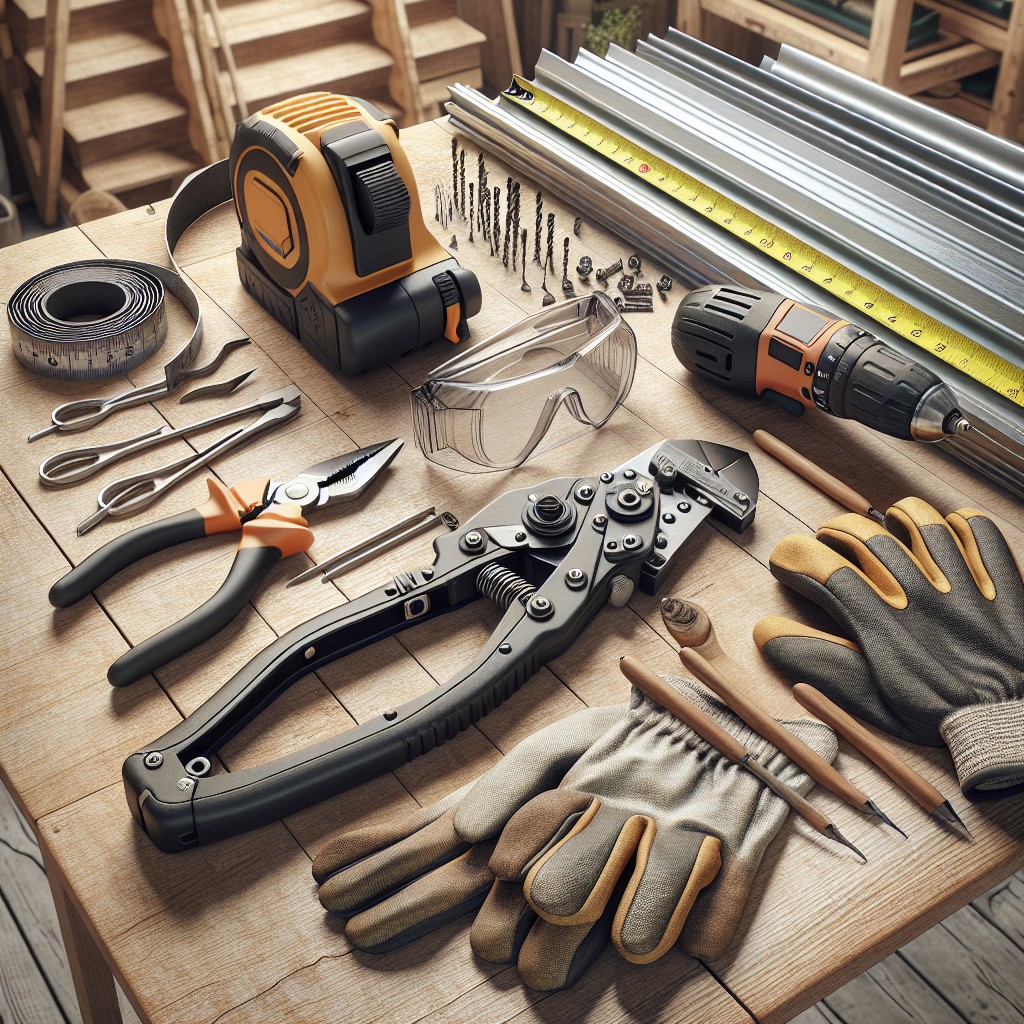Last updated on
Learn the proper techniques to accurately and safely cut metal roofing with this step-by-step guide.
Key takeaways:
- Use the right tools: power shear, tin snips, or nibbler.
- Prioritize safety: wear gloves, goggles, and ear protection.
- Choose tools based on metal type: tin snips, nibblers, circular saws, shears.
- Different cutting techniques for various panel types.
- Consult a professional for complex cuts or large-scale projects.
Tools Required

To undertake the task of cutting metal roofing effectively, assembling the correct tools is crucial. Opt for a power metal shear, tin snips, or a nibbler for smaller, more precise cuts. For long, straight cuts, circular saws or angle grinders equipped with a metal-cutting blade are the best choice.
Keep a measuring tape, marker, and straight edge or carpenter’s square handy to ensure accuracy in measurements and cuts. Remember, only use blades and cutting disks that are explicitly designed for metal to prevent damage to the material and ensure a clean cut. Wear proper eye protection, gloves, and hearing protection to ensure safety throughout the process.
Safety Precautions to Take
Prioritize wearing heavy-duty gloves to prevent cuts from the sharp metal edges. Ensure that you use safety goggles to protect your eyes from metal filings and debris.
Ear protection is recommended due to the high decibel levels emitted when cutting metal. Work in a well-ventilated area to avoid inhaling metal dust, and consider wearing a dust mask if cutting generates a significant amount of particulates.
Steady the material using clamps or a workbench to prevent slippage while cutting, reducing the risk of injury. Keep bystanders at a safe distance to avoid accidental harm from metal shards or tool misoperation. Routinely examine cutting tools for integrity and proper function to ensure safety and efficiency.
Choosing Appropriate Cutting Tools
Selecting the right tools is critical for precision and efficiency in cutting metal roofing. The thickness and type of metal will inform your choice.
- Tin snips are ideal for smaller, more intricate cuts. They work well for cutting softer metals or trimming metal roofing to size.
- Nibblers, either hand-operated or power-driven, are excellent for making precise cuts without distorting the metal. They are especially useful for cutting shapes or profiles.
- Circular saws fitted with a metal-cutting blade can be used for straight cuts on heavier metal sheets. The blade should have the appropriate number and type of teeth for the specific metal.
- Shears, either power shears or hand shears, offer a straight, clean cut and are suitable for long, straight sections.
Always opt for tools that are compatible with the specific gauge and profile of your roofing material to ensure clean cuts and prolonged tool life.
Cutting Techniques for Different Panel Types
Metal roofing materials vary widely, from corrugated iron and steel panels to metal shingles or tiles. Each type demands a specific cutting approach to ensure both the safety of the worker and the integrity of the material.
For corrugated panels, straight cuts across the ridges work best with nibblers or shears, as these tools can navigate the uneven surface smoothly.
Standing seam panels, characterized by their flat and vertical leg design, require precision. Hand snips or a power saw with a metal cutting blade are the tools of choice, with workers commonly using a straight edge as a guide for accuracy.
Metal shingles or tiles, often favored for their aesthetic appeal, necessitate careful cutting to avoid damaging their coating. Tin snips or a power shear can achieve a cleaner cut, especially important given their visibility on a finished roof.
Regardless of the panel type, cutting should always follow the manufacturer’s recommendations to avoid voiding warranties or compromising the material’s performance. Always support the panels well to prevent distortion and ensure cleaner cuts.
When to Consult a Professional
Certain scenarios necessitate the expertise of a professional. If the roofing project involves complex cuts or patterns, it’s wise to seek out a skilled tradesperson with the right tools and experience. Large-scale projects or those that require precise fitting around unusual features, such as skylights or vents, may also benefit from professional input.
Professionals can ensure that safety standards are met, particularly on steep or high roofs where fall protection gear is required. They can also navigate local building codes to ensure compliance. If the metal roofing material is under warranty, DIY cutting may void the warranty; manufacturers often require professional installation for the warranty to remain valid.
Inexperience with power tools, especially those designed for cutting metal, is another reason to consider hiring an expert. The learning curve can be steep, and mistakes can be costly. If in doubt, consulting with a roofer can save time, resources, and ensure the longevity and integrity of your roof.




